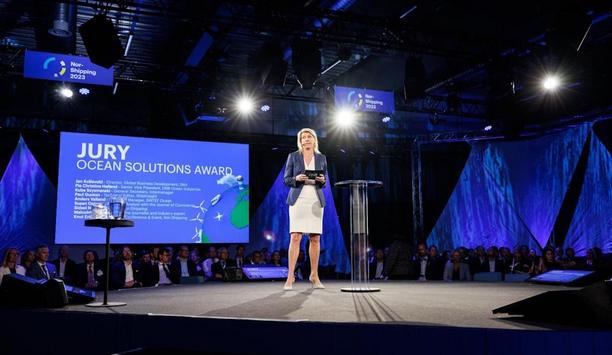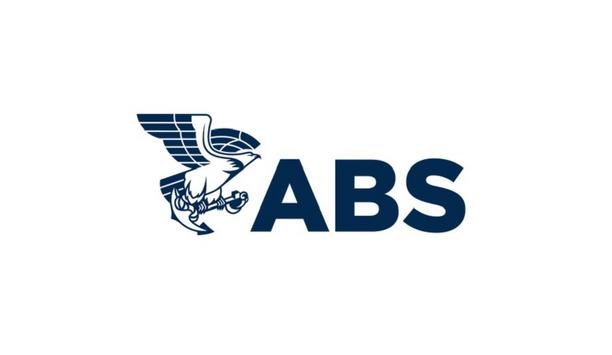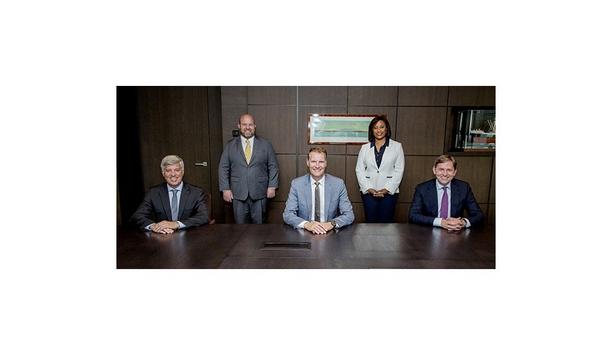Maersk remains committed to ensuring the supply chain needs are met in this period of uncertainty and intensified congestion all around the globe. In this “Asia Pacific Market Update”, Maersk provides the most relevant and up-to-date information so that together Maersk navigates this period of heightened volatility and keeps the supply chain moving.
Industry Trends
As the world and businesses continue to face challenges, Asia Pacific leads the way in projected GDP growth: China 8.9%, Vietnam 7.7%, the Philippines 8.0% and Malaysia 6.5%.
The apparel sector is expected to grow by 8.2% globally in 2021, with more than half of annual spend happening outside of North America and Europe. Asia already leads the way with 38% share of the 2020 global spend and this is expected to increase to 41% by 2025.
Consumer habits are changing, and online shopping is growing rapidly in Asia. Sourcing from South East Asia is growing as companies continue to look for solutions in addition to China.
So one can see that while the supply chain and logistics industry continues to face challenges, new opportunities abound as well.
Ocean Freight Update
- Maersk expects strong demand for exports from Asia to continue in Q3 and ocean networks are projected to be highly utilised. The focus remains on securing coverage and providing reliable capacity solutions.
- Equipment shortages remain an industry-wide challenge in Asia Pacific. 20-foot dry containers are sufficient, but 40-foot and 45-foot- dry containers are short. A 40-foot non-operating reefer is also insufficient.
- Australia and New Zealand ports continue to experience significant congestion. Maersk has introduced the new service, the Sirius Star, and added capacity to the Southern Star service to improve network flexibility and supply chain stability.
The Oceania/Americas services continue to be impacted by delays in the US and terminal congestion in New Zealand. To protect overall network stability, and therefore available capacity, the OC1/Trident service (connecting Oceania to the US East Coast) will now be calling at Napier and Port Chalmers bi-weekly. In Australia, Maersk has deployed Soroe Maersk to reposition empty containers and ease depot congestion.
- Less-than-Container-Load (LCL): Container shortages for China LCL shipments are expected throughout May. LCL space will be impacted by general ocean capacity and schedule reliability. Lead time for LCL shipments is expected to be longer than usual as carriers are omitting ports, putting pressure on LCL capacity.
In Oceania, congestion issues in the US are impacting LCL services to Oceania and Intra Oceania space (Trans-Tasman) is very tight.
Air Freight Update
- China: Export by air remains strong especially into the US. In the near future, the market will likely be buoyed by high-tech product launches as well as annual retail sales events (e.g. Amazon’s Prime Day). Capacity remains strained by the shifting of passenger flights to other routes and scheduled annual aircraft maintenance/safety checks.
The recent surge of COVID cases in India has resulted in many airlines cancelling scheduled services. Shippers are forced to consider alternative solutions, including dedicated charters.
- Thailand, Malaysia and Singapore: Maersk sees capacity constraints to and from the US. For shipments with deadlines or committed transit times to the US, please secure space using the Express service to prevent delays. Capacity from Thailand, Malaysia and Singapore to Europe and within Asia is still manageable. Bookings for all lanes need to be placed 5-7 working days ahead.
- Indonesia and the Philippines: Demand for garments, apparel, retail and electronics is increasing, especially on US & EU lanes. Demand from Jakarta and other parts of Asia results in tighter air space in Indonesia. To secure space, please make bookings at least 10 days before your planned departure date, especially for US & EU lanes.
Some Philippine airlines are experiencing backlogs from Manila. Advance block bookings of 1-2 weeks are required and must be finalised 48 hours prior to departure.
- Vietnam, Cambodia and Myanmar: Demand for technology, eCommerce and retails products continues to be strong in particular to destinations in North America. Passenger travel continues to be subdued. Strong demand for Myanmar is mostly caused by an accumulated backlog of shipping requests.
- Australia and New Zealand: The import market remains flat, with limited in- and out-bound passenger flights. Large consignments are often spread across multiple flights. Capacity from Australia and New Zealand is subject to carrier discretion with terms of booking subject to change. Where transshipment hubs are backlogged, airlines continue to opt for smaller tonnage consignments. Schedules for long-haul shipments are mostly tentative and connecting flights are subject to change.
- Japan export demand has increased with 20% YoY growth mainly from temperature-controlled shipments, automotive, consumer goods and raw materials. Korea export demand has grown 3% YoY mainly from automotive and chemicals. Recently, significantly reduced capacity of wide-bodied passenger aircraft has increased dramatically, with 20% growth for Japan and 80% for Korea, meaning the air freight market has been slightly stable but still remains volatile from long term speaking. Maersk continues to offer tailor-made solutions such as air charters, sea and air services to help manage disruptions.
Inland and Intercontinental Rail Update
- Thailand, Malaysia and Singapore: Equipment shortages will impact trucking capacity in Thailand in May, but demand remains strong. Cross-border trucks are operating normally.
- Oceania inland: Maersk Connect continues to support cargo movement in New Zealand direct from Port Tauranga to Auckland Metroport to help address congestion challenges.
- Japan and Korea: Inland demand has decreased due to COVID-19 so capacity is sufficient.
- Mainland China, Hong Kong and Taiwan: Trucking space is generally available in all locations, but Maersk have seen challenges in South China with congestion in Yantian and Nansha. COVID-19 related restrictions see on-going cross-border bottlenecks between Mainland China and Hong Kong/South East Asia.
China Railway continues to operate tight controls on rail space to ease congestion. Intercontinental capacity is forecasted to remain tight in May, in particular between China and Eastern Europe (Russia, Poland and Hungary.) Maersk estimates average delays of 5-7 days in Manzhouli (China), Erenhot (China) and Malaszewicze (Poland), and of 3-5 days in both Alataw Shankou (China) and Khorgos (Kazakhstan).
Major Ports Update
Ports in North Europe are under high pressure due to import cargo peaks and the ripple effect of Suez incident. Ports in West Central Asia are facing operational delays due to high yard density. Across the globe, most ports are facing operational delays.
Maersk is working on port swaps and port omissions to mitigate the impact and improve schedule reliability. Maersk recommends customers plan ahead and manage cargo delivery time.










